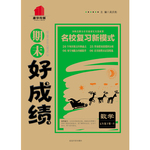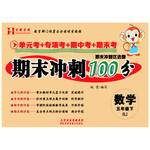题目内容
—Who is late for class again?
—________ you ask? Tim, of course.
A.Can
B.Would
C.Could
D.Need
D解析:第一个问“谁又上课迟到了?”根据答语的第二句“Tim,of course.”可知,空白处填Need。“还需要问吗?当然是蒂姆了。”

 期末好成绩系列答案
期末好成绩系列答案 99加1领先期末特训卷系列答案
99加1领先期末特训卷系列答案 百强名校期末冲刺100分系列答案
百强名校期末冲刺100分系列答案 好成绩1加1期末冲刺100分系列答案
好成绩1加1期末冲刺100分系列答案ROME: The legend of Leonardo da Vinci is covered in mystery: How did he die?Are the remains buried in a French castle really those of the master? Was the "Mona Lisa" a self-portrait in disguise (伪装)?
A group of Italian scientists believe the key to solving those puzzles lies with the remains, and they say they are seeking permission to dig up the body to conduct carbon and DNA testing.
If the skull is undamaged, the scientists can go to the heart of a question that has fascinated scholars and the public for centuries: the identity of the "Mona Lisa." Recreating a virtual and then physical reconstruction of Leonardo's face, they can compare it with the smiling face in the painting.
"We don't know what we'll find if the tomb is opened. We could even just find grains and dust," says Giorgio Gruppioni, an anthropologist who is participating in the project. "But if the remains are well kept, they are a biological record of events in a person's life, and sometimes in their death." Silvano Vinceti, the leader of the group, said that he plans to press his case with the French officials in charge of the said burial site at Amboise Castle early next week.
Leonardo moved to France at the invitation of King Francis I, who named him "first painter to the king." He spent the last three years of his life there, and died in 1519 at age 67. The artist's original burial place, the palace church of Saint Florentine, was destroyed during the French Revolution and remains that are believed to be his were eventually reburied in the Saint-Hubert Chapel near the castle.
"The Amboise tomb is a symbolic tomb; it's a big question mark," said Alessandro Vezzosi, the director of a museum dedicated to Leonardo in his hometown of Vinci. Vezzosi said that investigating the tomb could help identify the artist's bones with certainty and solve other questions, such as the cause of his death. He said he asked to open the tomb in 2004 to study the remains, but the Amboise Castle turned him down.
The group of 100 experts involved in the project, called the National Committee for Historical and Artistic Heritage, was created in 2003 with the aim of "solving the great mysteries of the past," said Vinceti, who has written books on art and literature.
Arguably the world's most famous painting, the "Mona Lisa" hangs in the Louvre in Paris, where it drew some 8.5 million visitors last year. Mystery has surrounded the identity of the painting's subject for centuries, with opinions ranging from the wife of a Florentine merchant to Leonardo's own mother.
That Leonardo intended the "Mona Lisa" as a self-portrait in disguise is a possibility that has interested and divided scholars. Theories have existed: Some think that Leonardo's taste for tricks and riddles might have led him to hide his own identity behind that puzzling smile; others have guessed that the painting hid an androgynous lover.
If granted access to the grave site, the Italian experts plan to use a tiny camera and radar to confirm the presence of bones. The scientists would then exhume (挖掘) the remains and attempt to date the bones with carbon testing.
At the heart of the proposed study is the effort to discover whether the remains are actually Leonardo's, including with DNA testing.
Vezzosi questions the DNA comparison, saying he is unaware of any direct descendants (后代) of Leonardo or of tombs that could be attributed with certainty to the artist's close relatives.
Gruppioni said that DNA from the bones could also eventually be compared to DNA found elsewhere. For example, Leonardo is thought to have rubbed colors on the canvas with his thumb, possibly using saliva (唾液), meaning DNA might be found on his paintings.
Even in the absence of DNA testing, other tests could provide useful information, including whether the bones belonged to a man or a woman, and whether the person died young or old.
Even within the committee, experts are divided over the identity of the "Mona Lisa."
Vinceti believes that a tradition of considering the self-portrait to be not just a faithful imitation of one's features but a representation of one's spiritual identity may have resonated (共鸣) with Leonardo.
Vezzosi, the museum director, dismissed as "baseless and senseless" the idea that the "Mona Lisa" could be a self-portrait of Leonardo. He said most researchers believe the woman may have been either a wife of the artist's sponsor, the Florentine nobleman Giuliano de Medici, or Lisa Gherardini, the wife of a rich silk merchant, Francesco del Giocondo. The traditional view is that the name "Mona Lisa" comes from the silk merchant's wife, as well as its Italian name: "La Gioconda."
1. Where is this passage most probably taken from?
|
A.A magazine. |
B.A newspaper. |
C.A textbook. |
D.A research report. |
2. Why does the author ask a couple of questions in the beginning?
|
A.To arouse the interest of readers. |
B.To puzzle Italian scientists. |
|
C.To answer the questions himself. |
D.To make fun of French officials. |
3. The best title of this story might be “_____”.
|
A.What Is the Purpose of an Investigation? |
|
B.How Did Leonardo da Vinci Die in France? |
|
C.Are the Remains Really Those of the Master? |
|
D.Did Leonardo Paint Himself as 'Mona Lisa'? |
4.The sentence “he plans to press his case with the French officials” (underlined in Paragraph 4) suggests that Vinceti intends to _____.
|
A.press the French officials to participate in their project |
|
B.urge the French officials to open the tomb early next week |
|
C.persuade the French officials to allow opening the tomb |
|
D.record events in a person’s life with the French officials |
5. Which of the following statements is true according to the passage?
|
A.Scholars have the same opinion on DNA testing. |
|
B.Scientists doubt if the remains are those of da Vinci. |
|
C.The identity of “Mona Lisa” has already been proved. |
|
D.Alessandro Vezzosi got permission to open the tomb. |
6. We can infer from the last two paragraphs that _____?
|
A.“Mona Lisa” is the name of the wife of a silk merchant |
|
B.the “Mona Lisa” is a self-portrait of Leonardo da Vinci |
|
C.experts divided the committee into several groups |
|
D.opinions differ of the identity of the “Mona Lisa” |
 It cozily stands beside a big green lawn at the heart of the privileged Ersha Island. Natural openness, spaciousness and privacy are its attractions, plus the nice interior. The food and service, however, are not satisfactory relatively.
It cozily stands beside a big green lawn at the heart of the privileged Ersha Island. Natural openness, spaciousness and privacy are its attractions, plus the nice interior. The food and service, however, are not satisfactory relatively. Mammamia presents low-profile luxury hidden in a side street in Tianhe's central business district. The pricing here is about 10% higher than similar restaurants in Guangzhou. Although the price is higher, the quality ranks higher too. Here you get approximately 80% of the ingredients and seasonings just transported from Italy, even the rice! The handsome chef Nicola from Turin (one of only five authentic Italian chefs in Guangzhou) crafts the "flavor of Italian Mama's food," as he likes to call it, of Northern Italy.
Mammamia presents low-profile luxury hidden in a side street in Tianhe's central business district. The pricing here is about 10% higher than similar restaurants in Guangzhou. Although the price is higher, the quality ranks higher too. Here you get approximately 80% of the ingredients and seasonings just transported from Italy, even the rice! The handsome chef Nicola from Turin (one of only five authentic Italian chefs in Guangzhou) crafts the "flavor of Italian Mama's food," as he likes to call it, of Northern Italy. C. La Seine
C. La Seine D. Xinwen Village, Humen
D. Xinwen Village, Humen E. G.I. Restaurant
E. G.I. Restaurant F. Macau Street Restaurant
F. Macau Street Restaurant